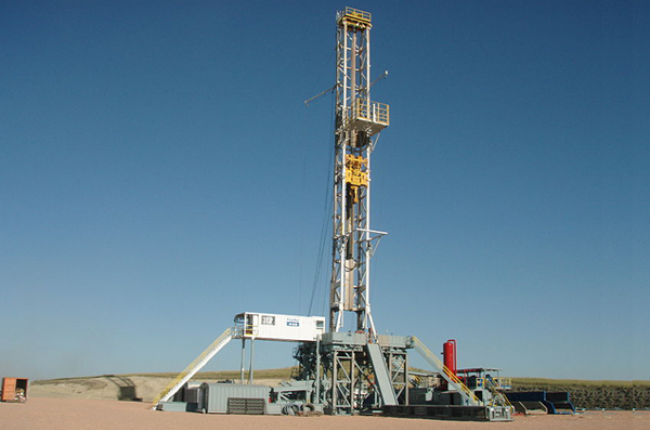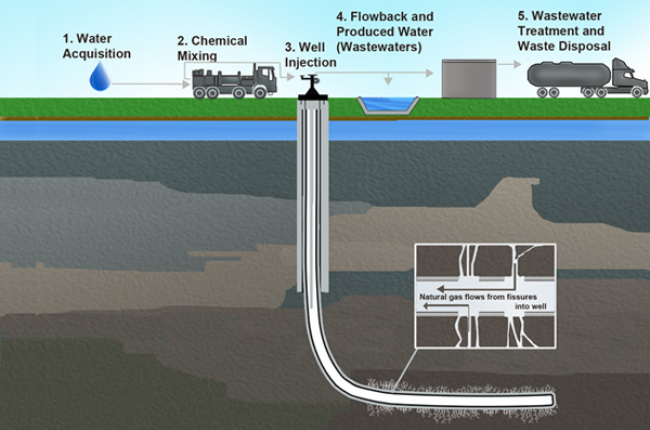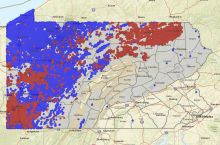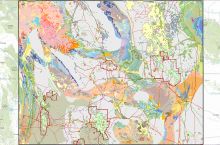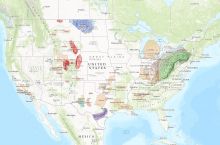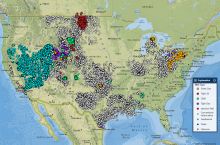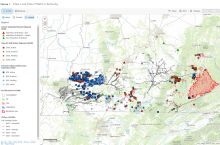Hydraulic fracturing opens narrow cracks in rock layers in order to allow oil, gas, or water to flow through the rock. During hydraulic fracturing, pressurized fluid is injected through a well into a subsurface rock layer in order to open the fractures. Hydraulic fracturing requires large volumes of water mixed with chemicals and proppants (often sand, used to "prop" open the fractures). These fluids must be recycled or disposed of in deep wells, separate from local water tables.[1]
Why does hydraulic fracturing matter?
In combination with horizontal drilling and other technological advances, hydraulic fracturing has allowed for the extraction of large, previously inaccessible reserves of gas (such as shale gas and tight gas) and oil in the United States. While the technique has been used for more than 60 years, its wider application with horizontal drilling since the mid 2000s has led to public debate over its benefits and risks.
How does geoscience help inform decisions about the use of hydraulic fracturing in energy development?
Geoscientists identify energy resources (such as shale gas, tight gas, and tight oil) that can be extracted using the combination of horizontal drilling and hydraulic fracturing. Others study the environmental impacts of the entire oil and gas extraction process, from well drilling to hydraulic fracturing to the disposal of waste waters.
References
1Hydraulic Fracturing, Frac Focus, https://www.fracfocus.org/index.php?p=learn/hydraulic-fracturing
Learn More
Introductory Resources
- Critical Issue: Hydraulic Fracturing (Webpage and Issue Brief), Geological Society of America
This peer-reviewed report provides a thoroughly researched overview of hydraulic fracturing. Defines hydraulic fracturing, discusses its role in energy development, and addresses potential environmental issues associated with the use of the technology.
Resources for Educators
- Education Resources Network, AGI's Center for Geoscience & Society
Search for hydraulic fracturing resources in: Curricula & Instruction
- NGSS Performance Expectations, Next Generation Science Standards
K-ESS3-1, 4-ESS3-1, MS-ESS3-1, HS-ESS3-1, HS-ESS3-2
- NGSS Disciplinary Core Ideas, Next Generation Science Standards
ESS3.A

